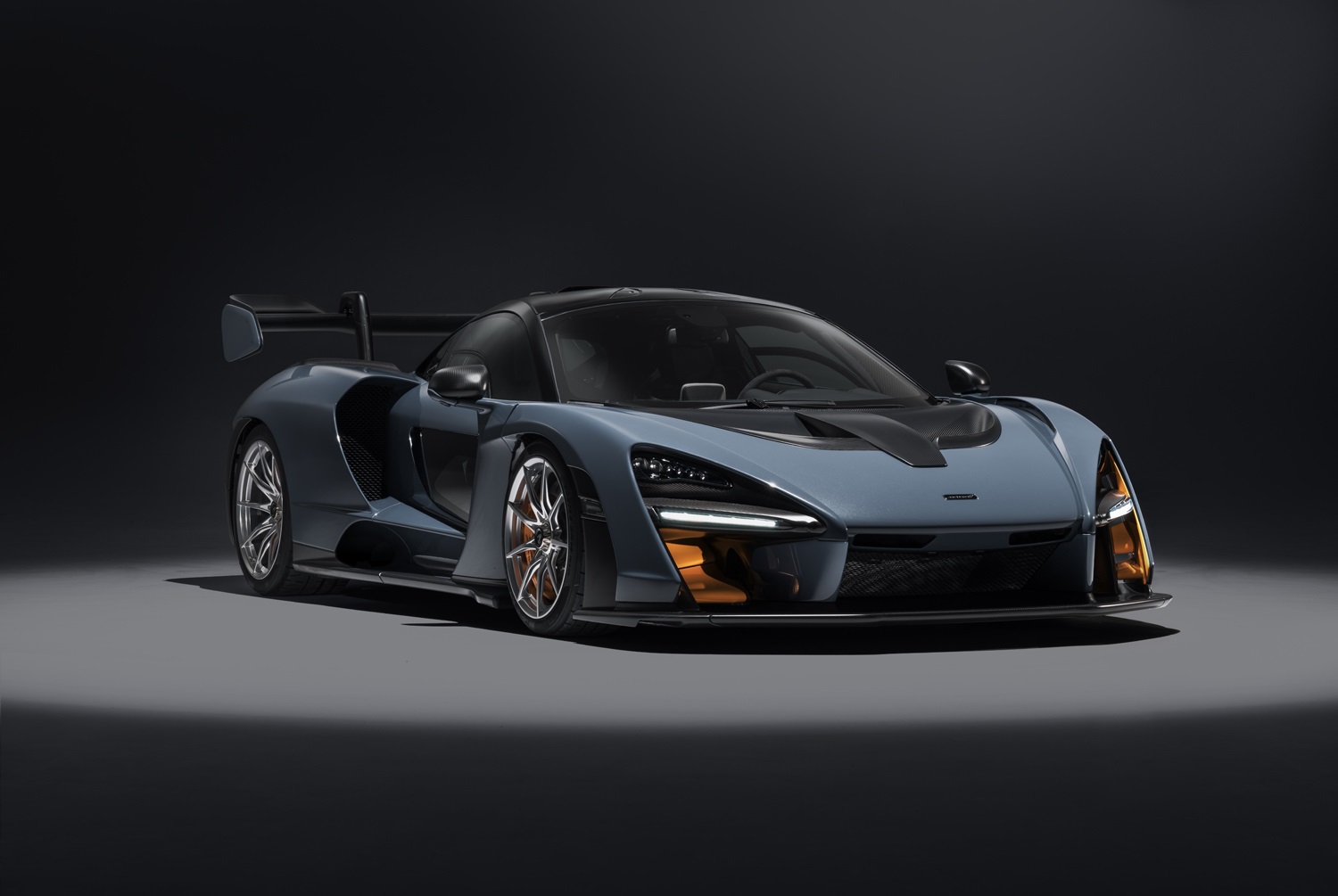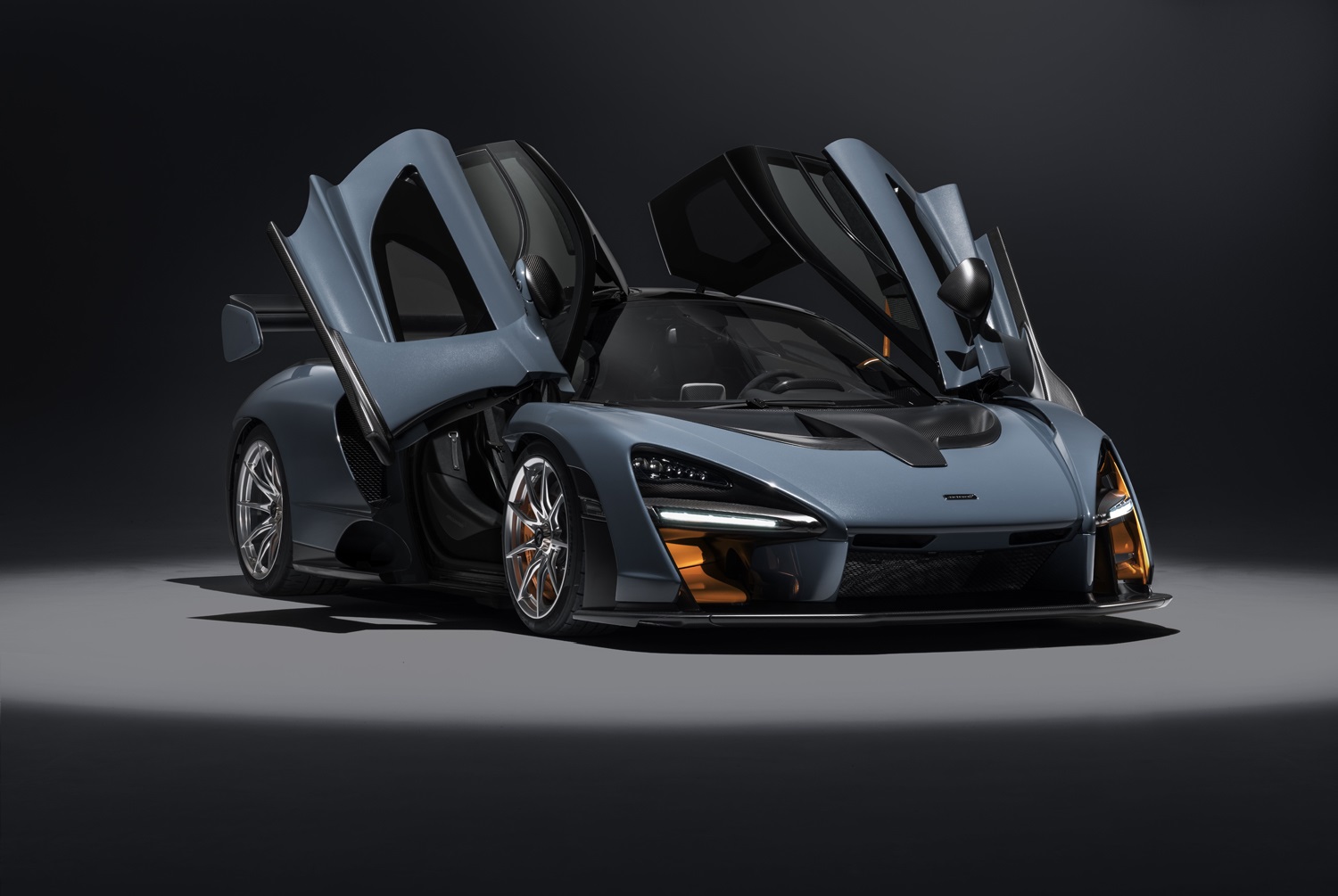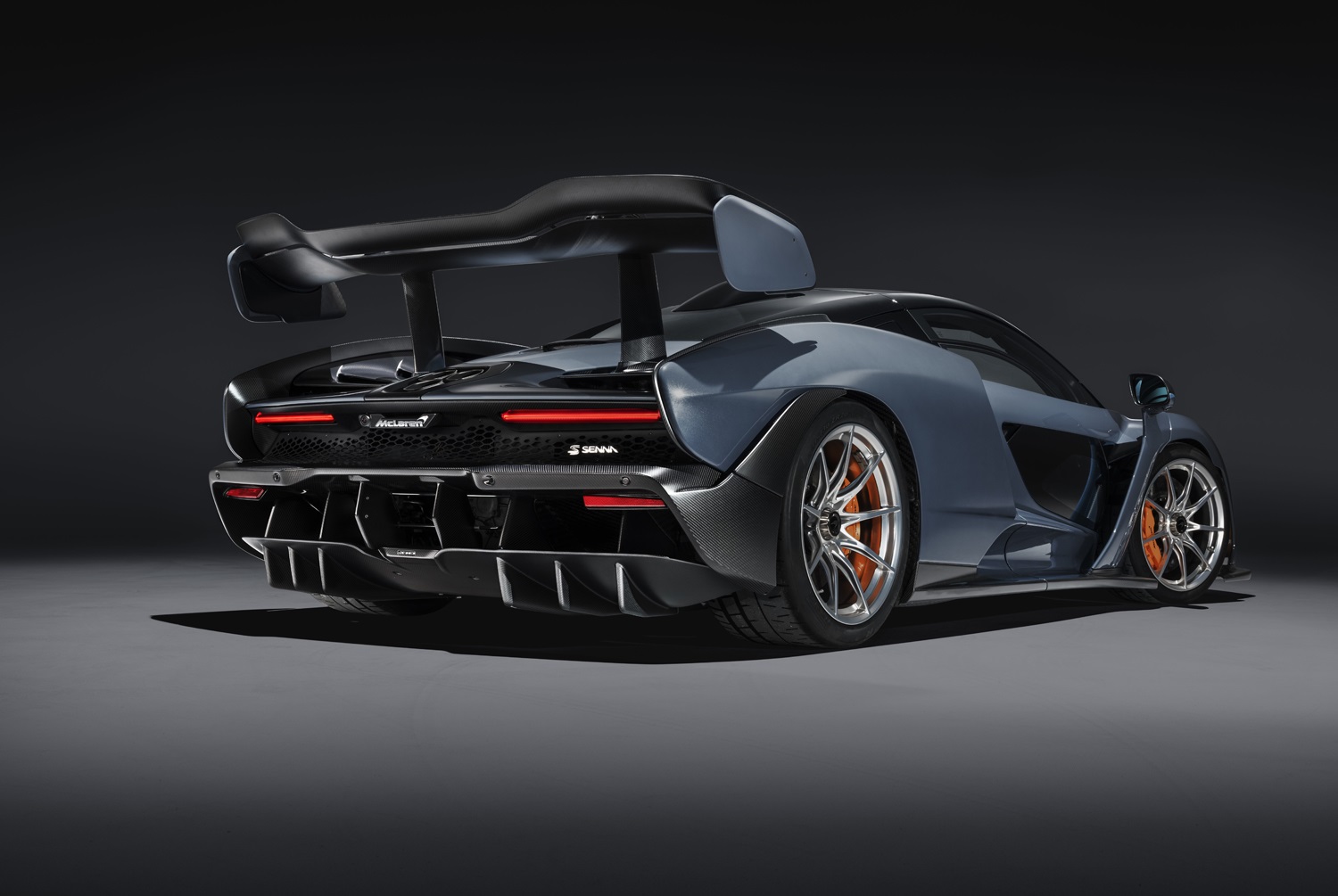If you’re going to make soup, first choose the pot. In McLaren’s view, the best “pot” for the Senna is a carbon fiber Monocage III chassis surrounded by carbon fiber body panels. So right off the bat you know four things: The car will be stiff, strong, relatively light, and light-year level expensive. Any time you add carbon fiber anything to a feature list, you also have to add at least one decimal place to the price.
McLaren set up the Senna for chassis control and balance at triple-ticket speeds with a competition-derived RaceActive Chassis Control II suspension, electro-hydraulic steering, carbon ceramic brakes, and racetrack tires approved for street use.
To cook and stir the Senna, McLaren placed a 4.0-liter, twin-turbo V8 engine in the middle of the car. The engine delivers what McLaren claims is “savage performance,” with 789 horsepower and 590 pound-feet of torque. With rear-wheel drive, a whomping mid-chassis engine, and all that carbon fiber, the 2,641-pound (dry weight) Senna is set up for more fun on the road or dead serious track shredding performance than most drivers will ever experience.
Those figures look impressive on paper; they make the Senna the most powerful street-legal car McLaren has ever built, which is no small feat when you look at the other models on the company’s résumé. On the track, they translate to a 2.8-second sprint from zero to 62 mph, a 9.9-second quarter-mile time, and a top speed of 211 mph. The aerodynamic add-ons that give the car its unique look create over 1,700 pounds of downforce at 155 mph, helping drivers safely exploit the Senna’s vast performance potential.
A seven-speed dual clutch “seamless shift” transmission helps drivers get the most from the Senna’s premium components. Seamless shifting never disengages the driveline while changing gears. The system’s electronic control unit anticipates and pre-engages the next gear while fully engaged in the previous gear. Unlike rev-matching, where the engine maintains revolution in the short intervals between gear engagements, with seamless shifting, the revs always perform actual work.
With the Senna’s transmission, the driver can aim for the next apex, mash the foot-feed, hang on, and let the shifter do the work in full-auto mode. Drivers who insist on selecting gears on their own can use the steering wheel rocker-mounted paddles.
The Senna’s carbon fiber dihedral doors hinge forward and upward. McLaren designed an ample entry aperture with the lifted door and low sill height to accommodate a driver and passenger both fully decked out in racing suits and helmets. There’s not much going on in the passenger side, and even the driver’s station is intentionally free of “cockpit clutter.” There are no buttons or switches on the 3-spoke steering wheel, giving the driver unencumbered road feel.
Alcantara upholstery helps save weight, though the firm offers leather for buyers who prefer a more premium feel. Similarly, parking sensors and a rear-view camera are offered as no-cost options. The list of extra-cost options includes a wider seat and an ultra-light, seven-speaker sound system made by Bowers & Wilkins. In other words, the Senna is as basic and stripped-down as buyers want it to be.
The 2018 Senna price tag starts at 750,000 pounds U.K., including taxes, or roughly $1 million U.S. McLaren notes the each Senna takes about 300 hours to build by hand. The 500 cars will begin delivery in the third quarter 2018, but it’s already too late to put in an order, as McLaren states the limited edition are “all already allocated.” So no soup for anyone else, either.
Updated on February 9: Added full technical specifications.

















